730998
tBuBrettPhos
97%
Synonym(e):
t-Bu Brett Phos, t-BuBrett-Phos, tertButylBrettPhos, t-BuBrett Phos, t-BuBrettPhos, [3,6-Dimethoxy-2′,4′,6′-tris-(1-methylethyl)-[1,1′-biphenyl]-2-yl]-bis-(1,1-dimethylethyl)-phosphin, tert-ButylBrettPhos
About This Item
Empfohlene Produkte
Qualitätsniveau
Assay
97%
Form
solid
Eignung der Reaktion
reaction type: Cross Couplings
reagent type: ligand
reaction type: Arylations
reagent type: ligand
reaction type: Buchwald-Hartwig Cross Coupling Reaction
reagent type: ligand
reaction type: C-X Bond Formation
reagent type: ligand
reaction type: Fluorinations
mp (Schmelzpunkt)
166-170 °C
Funktionelle Gruppe
phosphine
SMILES String
COc1ccc(OC)c(c1P(C(C)(C)C)C(C)(C)C)-c2c(cc(cc2C(C)C)C(C)C)C(C)C
InChI
1S/C31H49O2P/c1-19(2)22-17-23(20(3)4)27(24(18-22)21(5)6)28-25(32-13)15-16-26(33-14)29(28)34(30(7,8)9)31(10,11)12/h15-21H,1-14H3
InChIKey
REWLCYPYZCHYSS-UHFFFAOYSA-N
Suchen Sie nach ähnlichen Produkten? Aufrufen Leitfaden zum Produktvergleich
Allgemeine Beschreibung
tBuBrettPhos ist ein Phosphinligand, der in Palladium-katalysierten Kreuzkupplungsreaktionen breite Anwendung findet.
Anwendung
- Buchwald-Hartwig-Aminierung und C-O-Kopplung
- Suzuki-, Negishi-, Stille-, Hiyama-, Sonogashira-Kreuzkupplungen
- α-Arylierungsreaktion
Neue Anwendungen:
- Umwandlung von Aryl- und Vinyltriflaten in Bromide und Chloride
- Umwandlung von Aryltriflaten in Arylfluoride
- O-Arylierung von Ethylacetohydroximat
- Umwandlung von Arylchloriden und -sulfonaten in Nitroaromate
Leistungsmerkmale und Vorteile
- Weißer kristalliner Feststoff
- Luft- und feuchtigkeitsstabil
- Thermisch stabil
- Hocheffizient
- Große Toleranz gegenüber funktionellen Gruppen
- Ausgezeichnete Selektivität und Umwandlung
Rechtliche Hinweise
Ähnliches Produkt
Lagerklassenschlüssel
13 - Non Combustible Solids
WGK
WGK 3
Flammpunkt (°F)
Not applicable
Flammpunkt (°C)
Not applicable
Hier finden Sie alle aktuellen Versionen:
Besitzen Sie dieses Produkt bereits?
In der Dokumentenbibliothek finden Sie die Dokumentation zu den Produkten, die Sie kürzlich erworben haben.
Kunden haben sich ebenfalls angesehen
Unser Team von Wissenschaftlern verfügt über Erfahrung in allen Forschungsbereichen einschließlich Life Science, Materialwissenschaften, chemischer Synthese, Chromatographie, Analytik und vielen mehr..
Setzen Sie sich mit dem technischen Dienst in Verbindung.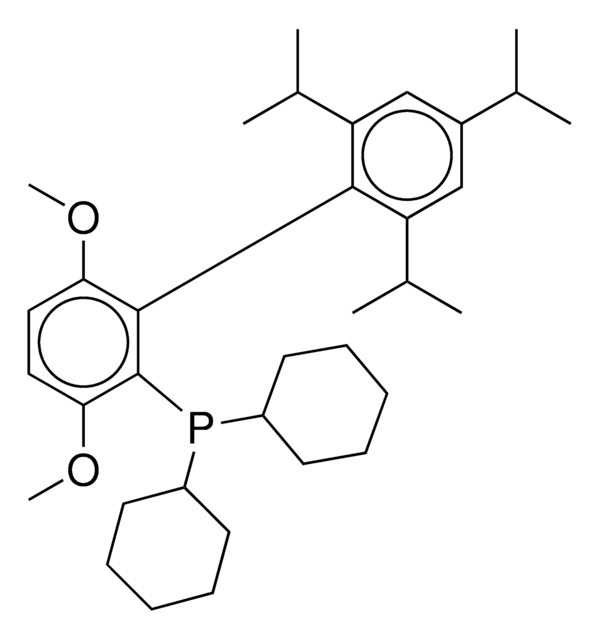
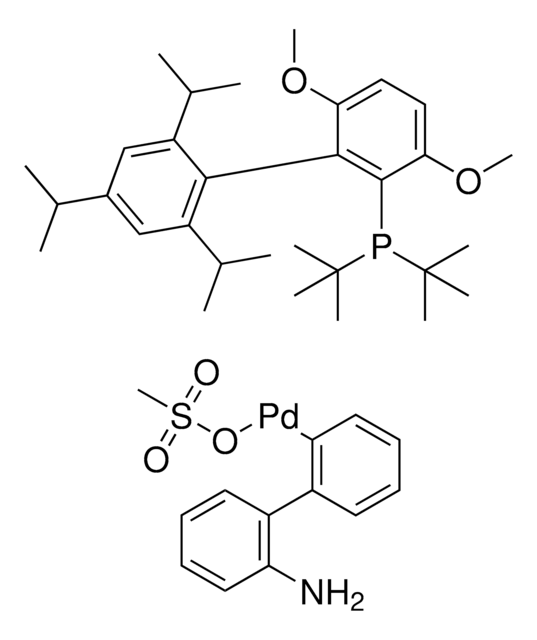

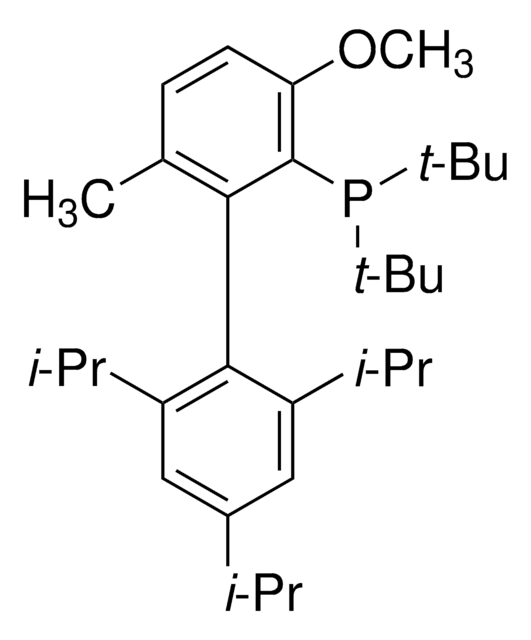
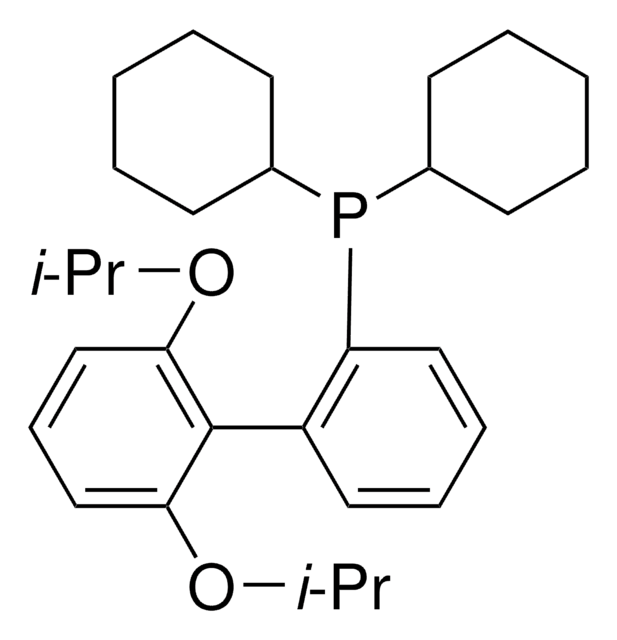
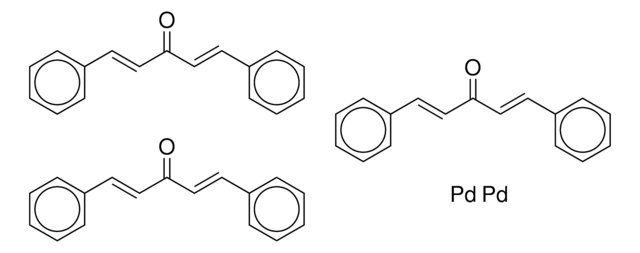
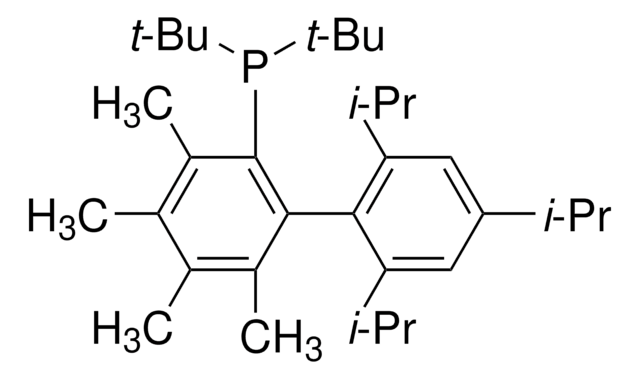

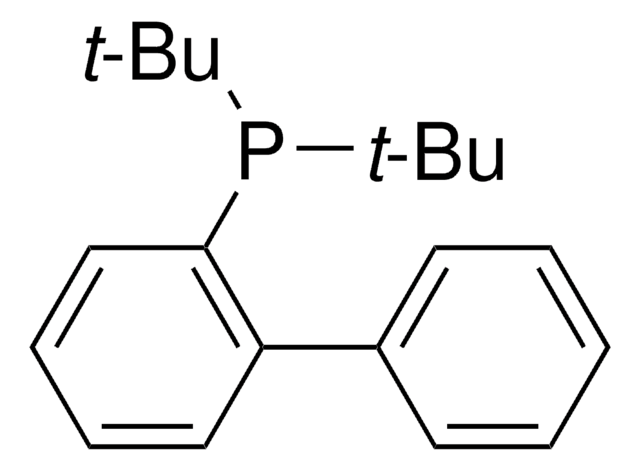

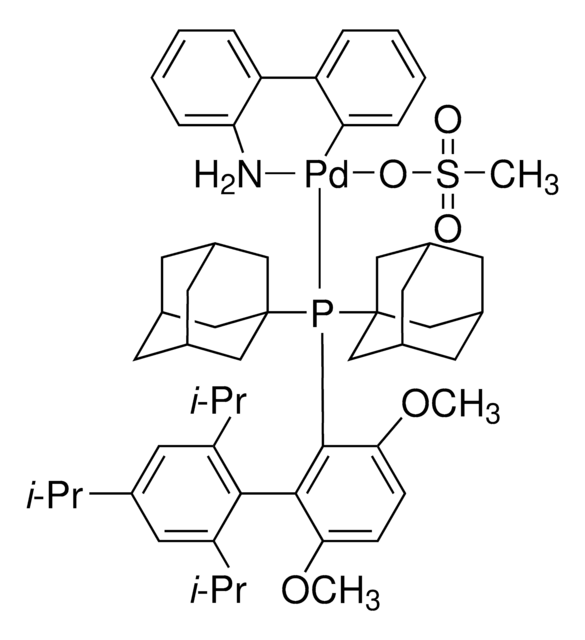
![2-{Bis-[3,5-bis-(trifluoromethyl)-phenyl]-phosphino}-3,6-dimethoxy-2′,4′,6′-triisopropyl-1,1′-biphenyl 95%](/deepweb/assets/sigmaaldrich/product/structures/371/999/7169f55f-ccbe-4696-bbdb-ab785b331b2e/640/7169f55f-ccbe-4696-bbdb-ab785b331b2e.png)
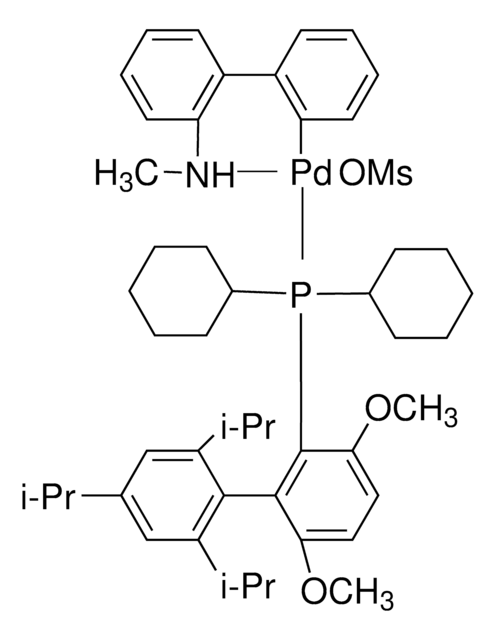
![Chloro-[2-(dicyclohexylphosphino)-3,6-dimethoxy-2′,4′, 6′-triisopropyl-1,1′-biphenyl][2-(2-aminoethyl)-phenyl]-palladium(II) may contain up to 1 mole equivalent of MTBE, 97%](/deepweb/assets/sigmaaldrich/product/structures/196/487/3708dace-6e45-4cbc-94d6-796bcb73e608/640/3708dace-6e45-4cbc-94d6-796bcb73e608.png)
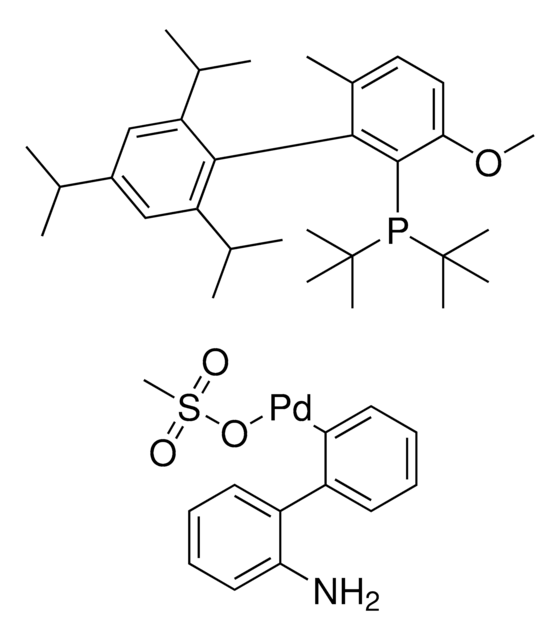
![5-(Di-tert-butylphosphino)-1′, 3′, 5′-triphenyl-1′H-[1,4′]bipyrazol 97%](/deepweb/assets/sigmaaldrich/product/structures/137/599/8b2f4b58-3384-40aa-9295-0887f7985525/640/8b2f4b58-3384-40aa-9295-0887f7985525.png)